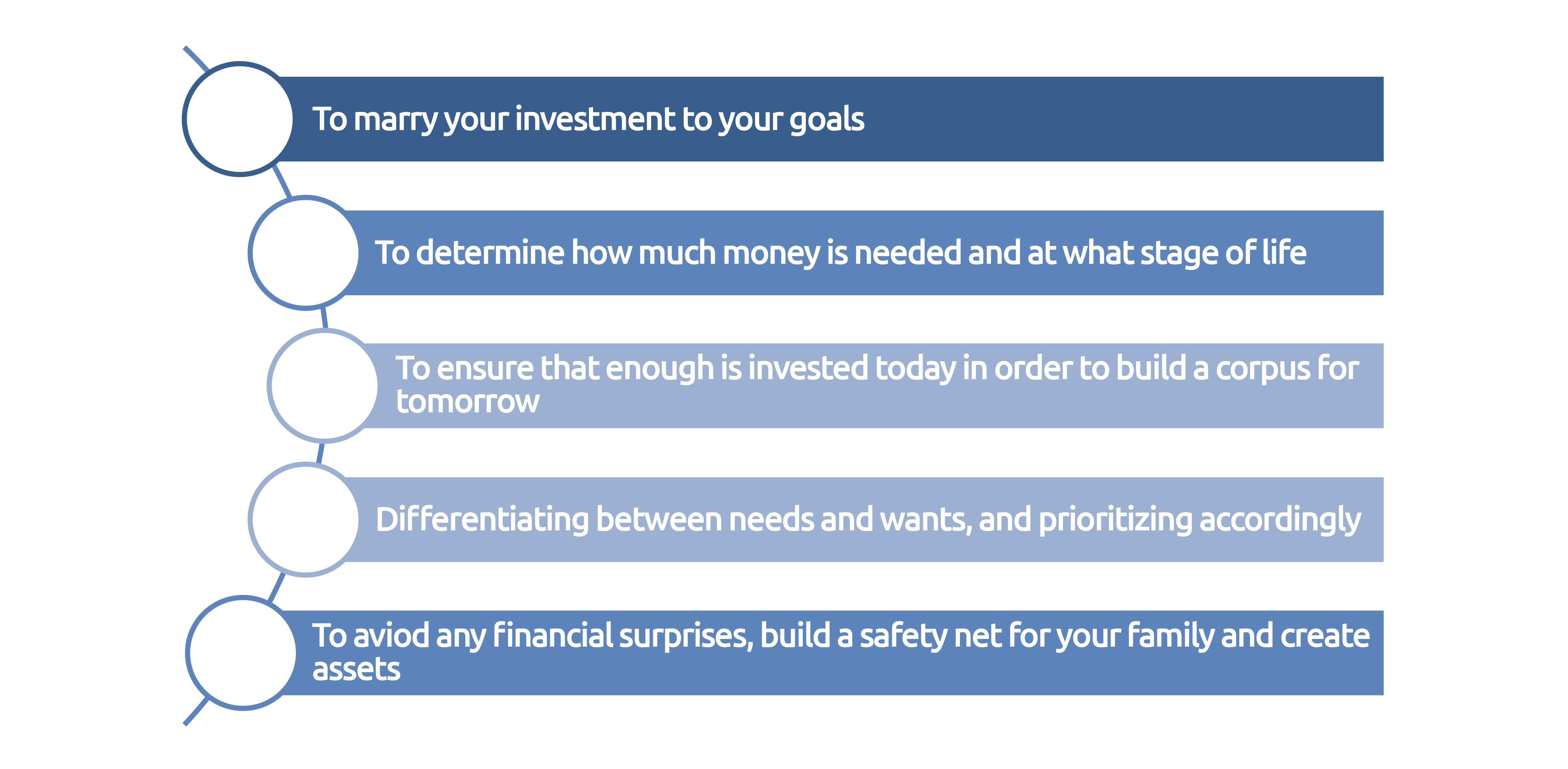Financial Term of the week- Goal Planning
If you don’t know what is it you are investing for, how will you know how much to invest and where to invest? This is exactly why goal planning is relevant. It is a process of listing down your goals and creating a plan to reach them. These goals
can be personal or financial; we shall focus on the financial goals in this article. Many times, you start investing because that is what you are supposed to do; or you begin with goal planning and investing, and then somewhere mid-way, lose
sight of your goals. Hence, goal setting needs to be the prelude to every investment plan and needs to be revisited at regular intervals as well. Come to think of it - a goal remains a dream unless quantified and worked towards.
Why do you need goal planning?

Your financial goals, for the ease of investment planning, can be categorized as below-

Needless to say, a long-term goal gives you more time in hand and hence, perhaps more room to take some risks. Mutual Funds being ideal for a long-term investment may provide you better, averaged-out returns over a span of more than 10 years.
Similarly, a short-term goal may require a more stable investment because your investment horizon is lesser.
The SMART way of goal setting
- Aim at Specific goals-
Don’t just say that you need to retire by 60 with ‘enough’ money in-hand. Define the corpus. Instead, say I want to retire at 60 with Rs 5 Cr at my disposal. Similarly, another example can be you saying you want
to pay off 80% of your home loan in the next 10 years. Prioritize and specify, at every step of the way. - Keep them Measurable
Don’t just say that you need to retire by 60 with ‘enough’ money in-hand. Define the corpus. Instead, say I want to retire at 60 with Rs 5 Cr at my disposal. Similarly, another example can be you saying you want to
pay off 80% of your home loan in the next 10 years. Prioritize and specify, at every step of the way. - Have goals that are Achievable
Now that you are determined to create a corpus of Rs 5 Cr in 30 years, come back to the present and check, if with the current income, can you even practically achieve this target? Consider the yearly inflation
and increase in income as well. Setting a target of Rs 5 Cr when you are capable of Rs 2 Cr is unfair to you and unachievable too. - Be Realistic
Don’t just say that you will open a restaurant after you retire. Do you have the resources, other than money, to achieve this goal? The corpus that is demanded by a goal like that- do you have the means to generate it? It
may be achievable for you to build a corpus of Rs 5 Cr for retirement but is the amount realistic considering the inflation and loss of income. - Keep it Time-bound
Attach a time horizon to every financial goal so that you know that you have exactly how many years to achieve them. For example, if you are 40 now, your retirement goal of Rs 5 Cr has 20 years to complete itself. But
unless you know you have only 20 years, how will you decide where to invest and for how long?
Goal planning is the first & the most crucial step of starting your mutual fund investment journey. Once you finalise your goals, you would need to assess your risk-taking capacity & then make the investment plan accordingly. So, go ahead and
note down your financial goals.
